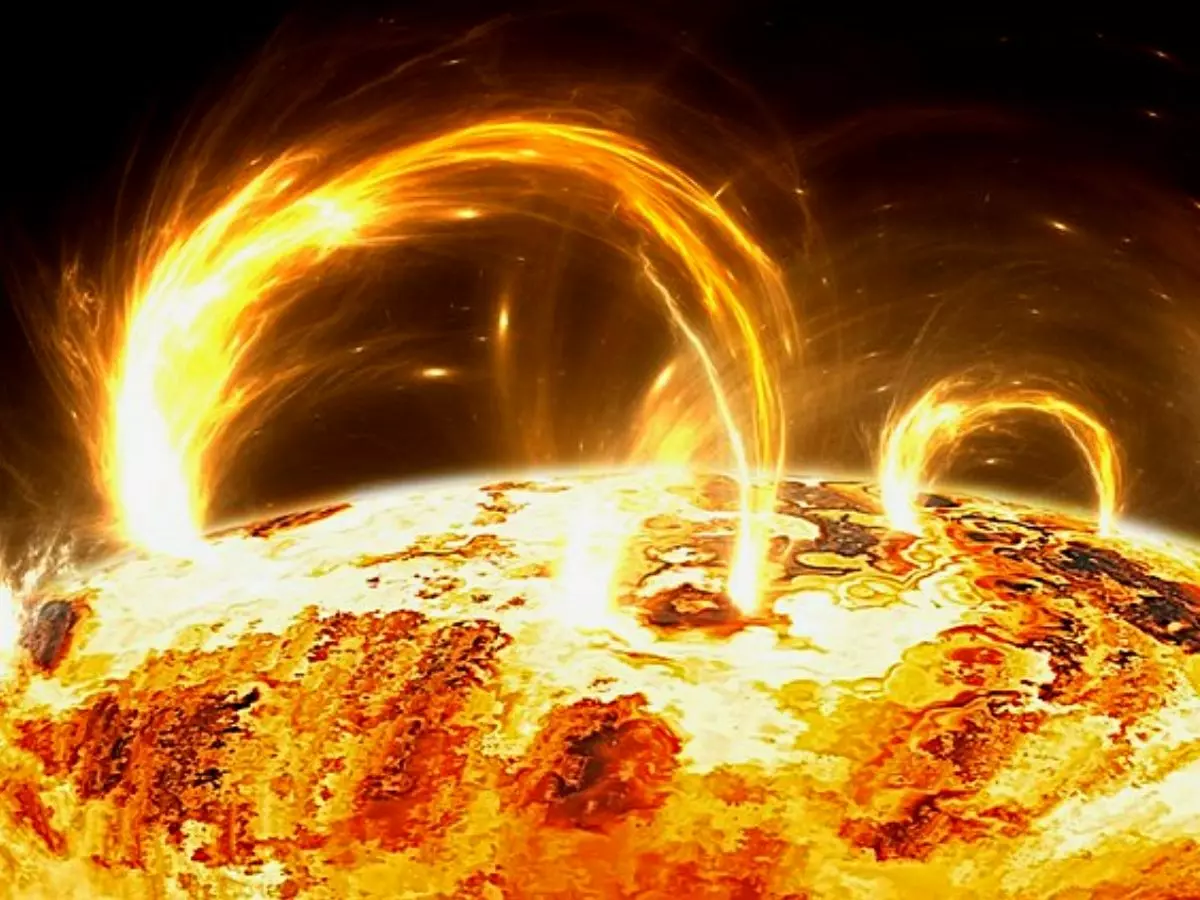Indian Scientists Solve Mystery Of Plasma Jets Erupting Over Suní»s Atmosphere
A better understanding of spicules is crucial among plasma astrophysicists as it could help them explain the process by which the plasma is supplied to the solar wind and how the solar atmosphere heats to a million degrees celsius.

Scientists from India and the UK have managed to explain how plasma, the fourth state of matter shoots up like jets called spicules in one of the three atmospheric layers of the suní»s chromosphere.
 Shutterstock
Shutterstock
Also read: New Solar-Powered Smartwatch Comes With 'Unlimited Battery': How It Works
The research that was led by astronomers from the Indian Institute of Astrophysics highlight that the behaviour is caused due to convection in the lower layer of the atmosphere, similar to that of a boiling vessel of water that pushes the plasma straight into the chromosphere.
Earlier it has been believed that the physics behind the short spicules is different from that of taller and faster ones. This study however has challenged this belief showing that solar convention can form all kinds of jets all by itself.
A better understanding of spicules is crucial among plasma astrophysicists as it could help them explain the process by which the plasma is supplied to the solar wind and how the solar atmosphere heats to a million degrees celsius.
Researchers found that the physics behind paint jets, when excited on a speaker, is comparable to how solar plasma jets react. The way paint jets shoot out upon a bass speaker is similar to how jets shoot out in the chromosphere.
To the unaware, when a liquid is placed above a speaker and turned on, the surface below the liquid becomes unstable and starts to vibrate after a certain frequency. However, liquid-like shampoo or paint would cause unbroken jets when the speaker is excited as its long polymer chain offer it directionality.
Researchers compare this to solar plasma jets as they found that jets are kept intact against instabilities by magnetic field in the sun and by polymer chains in the polymeric solution respectively.
 NASA
NASA
Also read: Engineering Student Builds Solar Panels That Don't Need Direct Sunlight, Uses UV Light
Sahel Dey, from the Indian Institute of Astrophysics, explains, í░The solar plasma can be imagined as threaded by magnetic field lines, much like the long chains in polymer solutions. This makes both the systems anisotropic, with properties varying with the direction in space.í▒
Murthy OVSN, the co-author of the study from the Azim Premji University, added in an official release, í░Spurred by the visual similarity between the solar spicules and the jets of paint on the speaker, we investigated the roles of magnetic fields on the sun using numerical simulations of the solar plasma. In parallel, we explored the role of polymer chains by using slow-motion videography.í▒
Keep visiting Indiatimes.com for the latest science and technology news.
